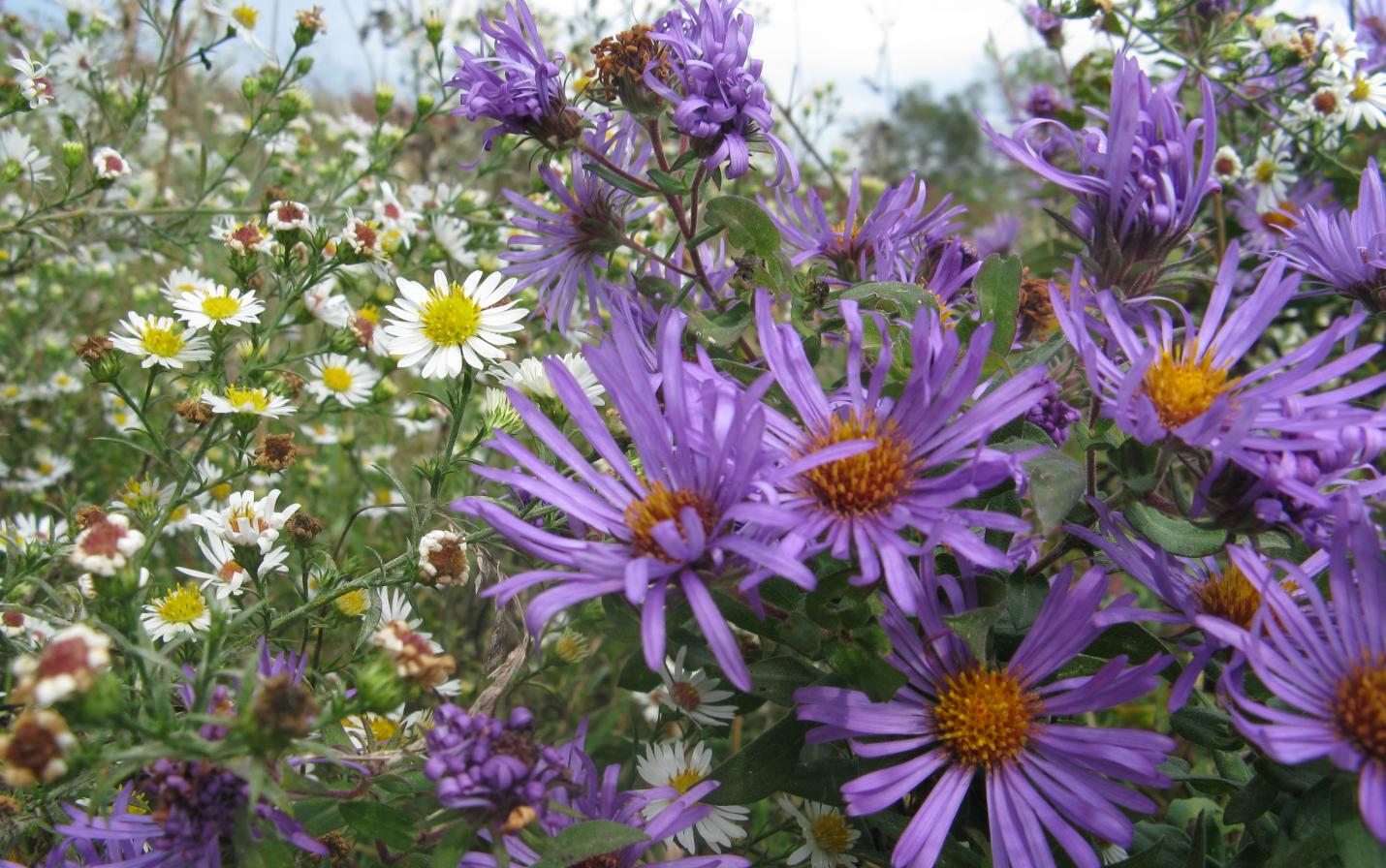
It started as a perfect day.
The day after Independence Day, I locked in the address for Borah Creek Prairie on my GPS, filled the Jeep with gas, and took off. The GPS directed me through the back roads of the Driftless Area. I never tire of driving this area: the bluffs, forests, pristine farm yards, cornfields, pasture land. Beautiful. Twice I missed GPS directions because I was admiring day lilies or a herd of dairy cows grazing in a valley.
When I pulled over at the Borah Creek Prairie trail head, I noted two vehicles in the parking area – a white sedan and a pickup that pulled a “brush hog,” a mower that clears paths for hikers and makes easier access to invasive plant species. It was my good fortune to meet at the gate Gary Eldred and Gary Adams. Eldred, a Prairie Enthusiast, is credited with discovering Borah Creek Prairie. A self-taught botanist, Eldred recognized the abundance of native wildflowers on the site. He initially worked with the landowner to manage the prairie with prescribed fire burns and invasive species control. Today, the 181 acres of scenic remnant prairie are owned by The Prairie Enthusiasts. Partners in its permanent protection are Mississippi Valley Conservancy, Driftless Area Land Conservancy, Wisconsin DNR, and the U.S. Fish and Wildlife Service.
Eldred and Adams are Prairie Enthusiasts who have worked on Borah Creek every Monday since the 1980's. They drive the brush hog to mow down invasive species such as Knapp Weed (which kills plants growing next to it), multi-flora rose, choke cherries, black berries, and of course sumac. “It's a race against time,” said Eldred, who admitted that he and Gary would need a full crew and thousands of dollars to restore the land to is original state.
I tried to impress the two Gary's of my hiking and environmental studies expertise, but they soon detected my ignorance. “How can you write about this prairie when you don't know anything about it?” Valid question – no answer. And so Eldred volunteered to give me a guided tour of the prairie. We took off along the northern boundary of the property. Eldred gave me a brief history of the purchasing of the land, and he pointed out the landscape diversity. We then hiked down a gentle slope, Heather's Prairie, toward a dry creek bed.
“This is a compass plant,” Gary said as we worked our way through the grass. “See how the solar leaves rotate toward the sun.” We saw wild bergamot which has a mint scent, Indian grass, rattlesnake master, prairie dropseed, and the yellow cone flower which should not be confused with black-eyed susans. Eldred pointed to a sumac plant that he had sprayed earlier. “You have to be very careful spraying the sumac so that you don't harm the surrounding plants,” he said. He showed how the plant's shoots spread. I am certain that Eldred could have spent the entire afternoon talking about the personal restorative power of the environment, the evidence of climate change on the Driftless Region, how he carefully removes non-native plants, and the “movement of the prairie in the wind.”
A hiker doesn't need a guide to enjoy Borah Creek Prairie. Any person can enjoy the wide open space, the wind whistling across the native grasses, the colorful flowers, and field sparrows and gray catbirds. But bumping into the two Garys amplified my visit. Eldred, who was inducted in the Conservation Hall of Fame in 2020, is a wildlife photographer, a restoration consultant, prairie botanist and naturalist. He admitted how the prairie, “saved my life” as it gave him a refuge, a purpose for being. Adams is a committed volunteer, dedicated to preserving the natural landscape. Both men are in their 70's.
As I left the preserve, I thought to myself, “Who will be the next Garys? How can we share these men's love for the wild with others? Who will assure that future generations know the difference between a yellow cone flower and a black-eyed susan? As Eldred said, how can we convince others of the importance of preserving these places, that we cannot impose order upon the environment to the detriment of all, of the interconnection of the land with ourselves?
I was doubly blessed July 5. I experienced again the beauty of the Driftless Area, and I made friends with two devoted conservationists. I promised Eldred we would meet again. It was a perfect day.
Grant T. Smith is a retired Viterbo University English professor who has hiked to the highest point of each of the 50 states except Alaska where he settled for hiking around Denali. He lives in La Crosse.
More information and a trail map for Borah Creek Prairie are available at this link.